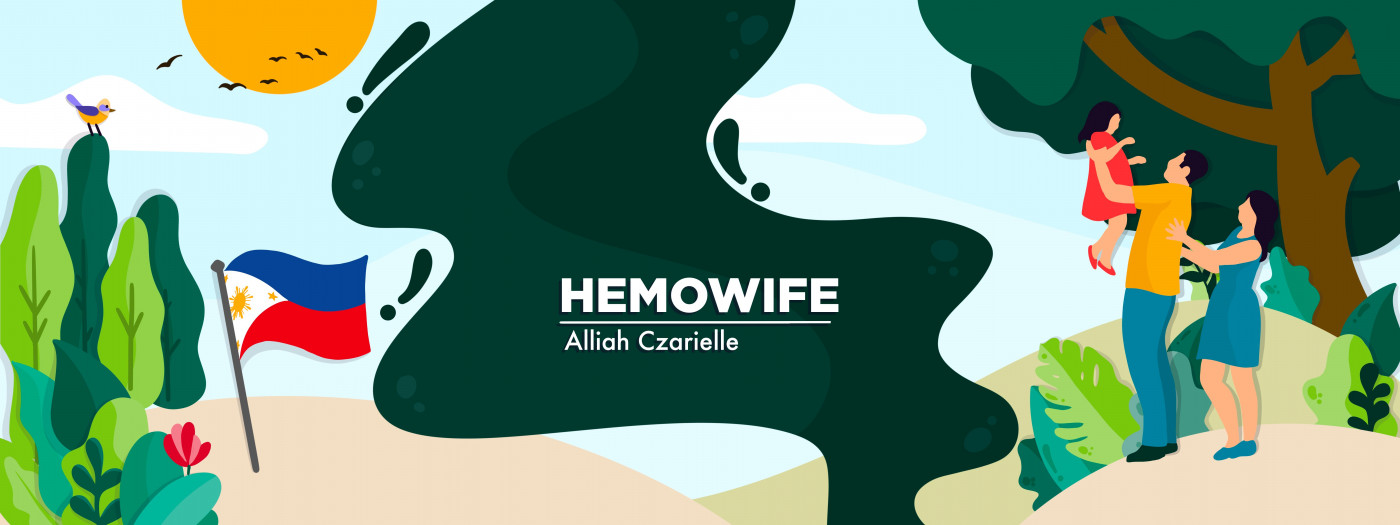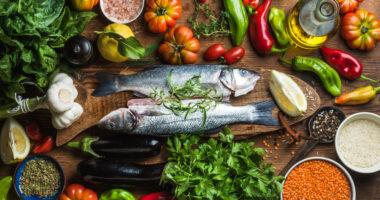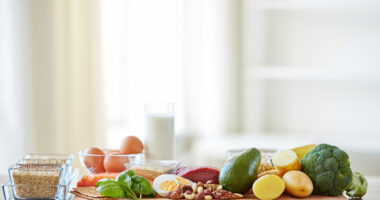My husband’s approach to developing a hemophilia diet
How he's learned that nutrition isn't one-size-fits-all

My husband, Jared, enjoys cooking. As I write this, a pot of gumbo simmers on the stove. Its strong aroma drifts throughout our open-layout house and toward my work desk. My stomach churns in excitement. It’s his first time making this dish, but as with nearly every recipe he attempts, I feel like he’s been making it forever.
Yet with his severe hemophilia B, Jared has to be mindful of his diet. His hemophilia organization advises against certain foods, particularly spicy dishes that can irritate the stomach lining and cause gastrointestinal bleeds, as well as other foods with blood-thinning properties.
Maintaining a healthy diet is essential for people with hemophilia. This approach helps minimize the risk of complications and supports overall well-being. But just as important, each person’s “hemophilia diet” can be quite individualized.
Foods to approach with caution
Certain foods, such as garlic, ginger, and coffee, are known to have blood-thinning properties. These are typically approached with caution in the hemophilia community, as they might increase the risk of a bleed. However, what works for one person may not work for another, and dietary responses can vary widely.
In Jared’s case, he’s found that garlic and ginger don’t seem to affect his bleeding episodes. Coffee, which he drinks in moderation, doesn’t cause him issues, either. He’s careful with it mainly because too much coffee could overstimulate his brain or interfere with his seizure medication. It all contrasts with the experience of a friend of his who also has hemophilia, but who notices an increase in bleeds whenever he consumes any amount of garlic.
The challenge of nuts
Nuts are a different story for Jared. While they aren’t necessarily bad for people with hemophilia and can even be recommended as a source of calcium, along with dry beans and seeds, Jared has to be cautious.
He developed synovitis, or swelling, in his right ankle because of repeated bleeds into the joint, which led to inflammation. When he eats too many nuts, he notices that the inflammation worsens. That’s likely because of nuts’ high levels of omega-6 fatty acids, which can exacerbate inflammation in conditions like arthritis or synovitis.
Despite that, Jared finds it hard to avoid nuts completely. He loves them, especially cashews, and enjoys the flavor too much to give them up entirely. His approach is one of moderation — enjoying the foods he loves without overindulging.
A philosophy of moderation
Jared’s approach to diet and life, in fact, is grounded in moderation. He believes that with mindful eating and balance, he can enjoy a wide variety of foods without causing himself harm. This philosophy reflects his broader outlook on life: living fully and consciously, without letting limitations or generalizations dictate his choices.
In the end, a hemophilia diet is not one-size-fits-all. People with the disease must find what works for them, through a mix of medical guidance, personal experience, and a bit of trial and error.
Note: Hemophilia News Today is strictly a news and information website about the disease. It does not provide medical advice, diagnosis, or treatment. This content is not intended to be a substitute for professional medical advice, diagnosis, or treatment. Always seek the advice of your physician or another qualified health provider with any questions you may have regarding a medical condition. Never disregard professional medical advice or delay in seeking it because of something you have read on this website. The opinions expressed in this column are not those of Hemophilia News Today or its parent company, Bionews, and are intended to spark discussion about issues pertaining to hemophilia.








Camila Elizabeth
Thank you for sharing.
It is comforting that we share habits, interests and love for a person with hemophilia. And being on the other side of the world.
Allyx Formalejo
Wonderful! I take it that you are also married to a person with hemophilia? I would love to hear about your journey too - perhaps we may be able to connect!
Eliseo Correa
I really enjoyed reading your post! I also have severe hemophilia B and was doing research on what kind of diet would help me with my bleeds I also have bad right ankle bleeds and bad elbows. The pain never goes away but sometimes are better than others and I am going to take your hemophila diet and see how it works for me, Thank you!